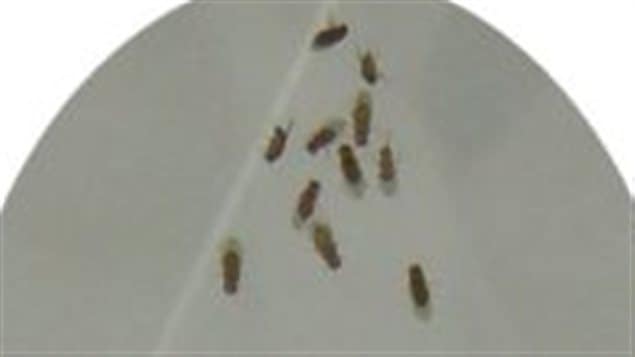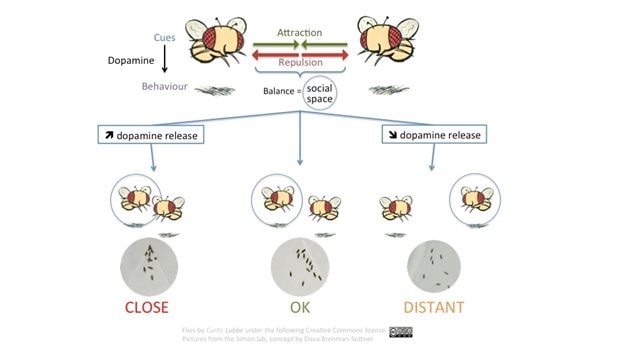It seems that may be a strange combination, but a recent study has shown there is a connection among the three.
Using fruit flies the study showed dopamine is connected to the concept of setting a comfort zone of space immediately around us which we define as our personal space
Anne Simon (PhD) is a professor in the Department of Biology at Western University in London Ontario and supervisor of the research.
Listen
We have our own “personal space”, which might vary somewhat among individuals and cultures, but it’s the social space immediately around us and if anyone comes within that space, it can make us uncomfortable unless they’re invited.
It seems it’s not just a human thing.
Simon’s study showed that insects, in this case fruit flies, also have a personal space and that dopamine plays a role in determining what that distance is.
The study was recently published in the science journal the Royal Society- Biology Letters under the title ,”Modulation of social space by dopamine in Drosophila melanogaster, but no effect on the avoidance of the Drosophila stress odorant”. (abstract here)
Dopamine is often thought of as the chemical the brain releases in relation to pleasure or gratification. Simon points out that we’re learning more about it and its function is more of a “facilitator” to increase or decrease the neuron response intensity of other chemicals in relation to a stimulus caused by any kind of excitement.
Because dopamine plays an important role in many aspects of brain response, Simon felt that it may also play a role is such a basic response as determining social distance, or personal distance

Using the flies in small containers they varied the dopamine neurotransmitter amount.
In their normal state the flies tended to stay about one to two body lengths apart.
They found that too little dopamine released by the neurons, and male fruit flies need to get away from each other. An increase in dopamine release, and the personal space is reduced and they get closer. For female fruit flies, their social distance increased both with too little or too much release of dopamine.

While the study involved these tiny insects, Simon believes this research and further studies could have implications in better understanding people within the autism spectrum or with schizophrenia, for example.
She says, “Ultimately, this research could lead us to understand a little better why some people are averse to social contact. It might also help us understand why some people who clearly want to interact don’t interpret some social cues the same way others might”.
But she notes before one can confirm that the same processes occur in humans further studies in mammal models need to be performed.
She says she will now be studying which particular brain receptors are involved in the reception of dopamine and where in the various parts of the brain they are located.
Additional information







For reasons beyond our control, and for an undetermined period of time, our comment section is now closed. However, our social networks remain open to your contributions.